Is your DEI team an unhealthy microcosm of your school or organisation? How you can journey through and learn from the process, in order to inform your future practice.
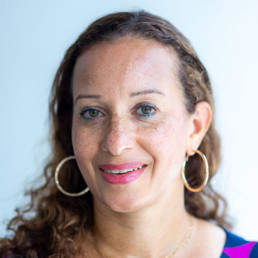
Written by Caroline Davis
Caroline Lucy Davis, International English Teacher & Diversity, Equity and Inclusion Advocate with a particular interest in the intersection of gender and race.
This article, which was presented at the AIELOC (Association of International Educators and Leaders of Colour) online conference 2019, discusses my experience of working on DEI initiatives where there was evidence of clearly inauthentic and tokenistic practice to achieve certain targets and tick box exercises. My journey is one of discovery to disruption to learning and exiting one educational organisation’s version of cultural relations and DEI work.
I became a member of my organisations DEI team and discovered a fractured, non-communicative, barely functioning group receiving very little guidance. If I examine my reasons for seeking out the team at the time I did, it is really quite simple and why others may do the same. I was struggling with certain issues surrounding gender in particular and I wanted an outlet. I would later learn that I was certainly not alone in my experiences. My experiences also resurfaced my long-term interest in social issues and experiences of marginalisation. I found the lack of initiative and direction of the DEI team very infuriating and was keen to move things forward.
So I found other ways to impact DEI initiatives through external volunteering opportunities sometimes connected to the organisation. I joined local and expatriate women’s groups, ran International Women’s Day events and was involved in a Global Race and Culture Working group. I networked internationally and it was this extending of my circle which was very enlightening and liberating for me. After quite some time of learning and leading more these initiatives, as well as feeling frustrated by the lack of movement on issues, I became lead for the DEI team. Excited, I threw myself into my new shiny (unpaid!) role in an area that I felt passionately about.
I researched and thought carefully about how I would establish a representative team and one that would work on the areas of EDI that mattered most, and were most pressing to the staff. My team was going to be functional and effective! I read about how to have inclusive meetings and communication, as I had been long-term recipient of the opposite at the organisation. I had become used to hearing the same old dominant voices and seeing the same old faces…those faces that were all so similar to one another.
Working conditions did not make communication, meetings, organising events or initiatives easy, and then there were the office and organisational politics. Despite the challenges and we had some successful, if with less attendance than hoped, events and initiatives.
At the same time, the idea of a microcosm became apparent to me when discussing issues even within the EDI team. We just did not seem to have the same understanding or experience of things. Could the EDI team, as representative of the wider organisation, be part of the problem? I indeed found clearly inauthentic and tokenistic practice to achieve certain targets and tick box exercises and even found my work accredited to someone else.
After delivering a presentation on racism in the UK and the lack of people of colour at senior leadership in the organisation, a manager approached me to say they had never noticed any racism and that was why they were so proud to work for the organisation. It was alarming that evidence can be so clearly under one’s nose, but remain unseen. Do we need to see racist acts to figure out that racism must be at play if there are no people of colour at senior leadership levels?
Clearly DEI teams can be unhealthy microcosms of wider organisations, just as classrooms, offices, schools, organisations can be unhealthy microcosms of wider society. So how do we journey through and learn from the process to inform future practice.
In my experience, the learning is the work and it is as rich, as it is exhausting. Keep a record of what you learn and how you learnt it. Seek out opportunities and reach out to the wider network. Stretch your microcosm bubble, perhaps you can burst it! By expanding my network and volunteering, I came to understand that there is a bigger world out there and people who see what you see, and want to make a genuine difference. I learned a great deal and despite the apparent silence, I believe I did disrupt things. I had felt invested and at the same time captive there and in the end decided that it was best for me to exit that educational organisation’s very outdated version of cultural relations and DEI work. This is how to journey through, learn from the process in order to inform your future practice.
Anti-bullying beyond Anti-Bullying Week

Written by Hannah Glossop
Head of Safeguarding at Judicium Education. Previously a Designated Safeguarding Lead and Assistant Head, Hannah now leads audits and delivers training to support schools with all aspects of their safeguarding.
2021 was yet another year where we saw a raft of deeply worrying examples of bullying. Research from the Anti-Bullying Alliance highlights that bullying continues to play a big part in young people’s lives: “Data we collected from pupil questionnaires completed between September 2020 and March 2021 also showed that one in five (21%) pupils in England report being bullied a lot or always.” High profile cases such as the institutional racism within the cricket world show that bullying in relation to our nine protected characteristics is a problem that goes far beyond schools.
Anti-Bullying Week 2021 brought with it a range of wonderful resources, tweets and articles in relation to anti-bullying back in November. As we march through the academic year, it is essential that we do not lose momentum and that we pay particular attention to tackling any bullying related to protected characteristics. So how can you do this?
1.Involve your pupils.
Consider an anonymous survey of your pupils, asking how many have witnessed bullying at school. This will give you a much clearer picture of how much is going on at your school and which groups are particularly targeted. Show students that you are taking bullying seriously and involve them in the policy decisions. Create a version of the bullying policy that is accessible for younger pupils.
2.Embed a culture of vigilance.
Empower both staff and students to act when they see or hear bullying taking place, either in person or online. Review the ways in which bullying is reported at your school-will all staff know how to progress bullying disclosures? Do students recognise that many nasty remarks may violate the Equality Act? Do students have a way to report bullying which avoids them having to speak face-to-face to a member of staff? Promote your anti-bullying work around the school, share it online and tell parents and carers. If pupils know you are taking it seriously, they are more likely to report it.
3.Identify hotspots.
Identify any particular areas in school, times of the day or online platforms where bullying seems to be taking place more frequently. Where possible, increase supervision in worrying areas or at problematic times of the day. If much of your reported bullying is taking place online, use external resources such as your Safer Schools Officer to explain when online abuse crosses a line and becomes illegal activity-for example hate crime and blackmail.
4.Curriculum.
Educate young people around the protected characteristics, what the Equality Act means and what impact this Act has on everyday life. Ofsted have recently updated their guidance on ‘Inspecting teaching of the protected characteristics in schools,’ noting that “No matter what type of school they attend, it is important that all children gain an understanding of the world they are growing up in, and learn how to live alongside, and show respect for, a diverse range of people.” In addition, the Proposed changes to Keeping Children Safe in Education 2022 include a new section on schools’ obligations under the Equality Act 2020, adding schools, “should carefully consider how they are supporting their pupils and students with regard to particular protected characteristics – including sex, sexual orientation, gender reassignment and race.”
5.Record and review.
Paragraph 78 of the Ofsted’s School Inspection Handbook lists the “Information that schools must provide by 8am on the day of inspection” and includes:
- “Records and analysis of bullying, discriminatory and prejudiced behaviour, either directly or indirectly, including racist, sexist, disability and homophobic/biphobic/transphobic bullying, use of derogatory language and racist incidents.”
Rather than seeing this as a mere Ofsted “tick box” exercise, use these records to fully explore which forms of bullying are happening within and around your school. Ensure that each reported bullying instance is recorded, using your behaviour management or safeguarding reporting mechanisms. Investigate any trends in these reports, share these with governors and senior leaders and take meaningful action to address these. For example, if disability-related bullying is becoming prevalent, think about what resources are needed to both educate children and show them that this form of abuse will not be tolerated.
Over the coming months ahead of the next annual Anti-Bullying Week, bear the above in mind and remember that embedding some of these ideas could make many of your students feel much less segregated from school life and much more likely to thrive.
The Power of the Community
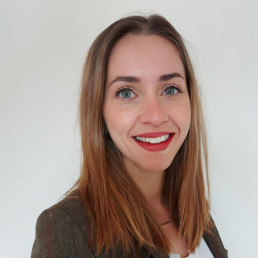
Written by Dena Eden
English teacher and writer based in Norfolk. MA in Educational Research and currently working as an English Standards Leader.
I signed up to the recent #DiverseEd conference knowing I would hear about some brilliant examples of Diversity, Equity and Inclusion work going on across education; I didn’t expect to finish the conference feeling empowered. Listening to authentic voices and lived experiences encouraged me to reflect on my own, and has given me the confidence I needed to forge ahead with necessary change.
As a cis white person I recognise my privilege. As a woman, I have experienced the frustration of my ideas not being taken seriously until a man repeats them. My choice on how to present physically also means people have undermined my intelligence and assume I enjoy shopping and ‘partying’ – they were someone’s actual words. They are surprised when I share my achievements and professional life before teaching. They are even more surprised when they find out I’m gay. Ironically, the part of my identity which is a ‘protected characteristic’ has been met with more positive outcomes than negative. When people ‘find out’ I am gay, women treat me more warmly and men take me more seriously. But that’s a whole other blog post.
I want to share my own experience to try and explain the effect the #DiverseEd conference had on me: despite being invested in creating a truly inclusive environment for a long time, I didn’t feel ‘diverse’ enough to be the person to do that – but at the same time also felt a huge pressure from being part of the LGBTQ+ community to be a voice for those who don’t speak up. Growing up in Birmingham and then living and working in both Mexico and the USA means that I have experience of living life in the role of the ‘other’ – but also that I have always worked in environments rich in diversity. Embarking upon a career in education in a significantly less diverse area of the UK was a shock to me.
Despite absolutely loving where I live and work for lots of reasons, it does continue to surprise me when I witness the problematic attitudes and language used when talking about diversity and inclusion. Discriminatory language is used without understanding why it is a problem and the pervasive idea that ‘real’ prejudice is overt and/or violent means many people do not recognise their privilege: Prejudice hides behind ignorance; tokenism acts as acceptance; tolerance is sufficient.
Understanding inaction: providing solutions not problems.
My experiences have frustrated me and as a result, I approached leadership in the Trust I currently work for to start a conversation; it was met with enthusiasm and support and has led to me setting up an Inclusive Communities group working with outstanding colleagues invested in making long lasting change.
Up until the #DiverseEd conference, I had some idea of what I wanted us to do – but have been apprehensive. For me, a truly inclusive environment has always been about addressing the root of the issue – people’s mindsets. Until people are willing to admit both their own privilege and the importance of the work that needs to be done, nothing will change.
Watching the conference helped me to reflect on previous conversations and helped me to understand that I had been too concerned with losing respect or upsetting others by voicing how crucial the work around diversity, equity and inclusion really is. But without action, we are conversationalists not activists; my thinking has now shifted from worrying about reactions to focusing on my own actions.
Before the conference, I felt like the battle was in trying to get people to appreciate the importance and immediacy of the work that needs to be done – it isn’t work with immediate measurable outcomes for example. After watching the conference, I feel validated in arguing that there should be no such battle. The immediacy and importance of this work is not an opinion – it is a fact.
So moving forward, rather than focusing on whether the changes can be made, I am focusing on how they will be made. Working with an incredible community and calling on the expertise of my colleagues, we are going to approach people with solutions rather than problems. This is where we are going to start:
- Looking at policy within schools and across the whole Trust.
- Educating our staff to be able to challenge one another and our young people – this will be led by training from authentic voices sharing their lived experiences.
- Recognising multiple stakeholders in this work: parents, governors and HR should be included in our approach to EDI.
- Working with our incredible curriculum team to explore ways we can include balanced and meaningful representation into our existing work.
It was overwhelming to think about the work that needed to be done; now I’m excited to get started. We deserve genuine support, not allowances; to be comfortable as well as safe; celebration, not tolerance.
“You never get a second chance to make a first impression.”
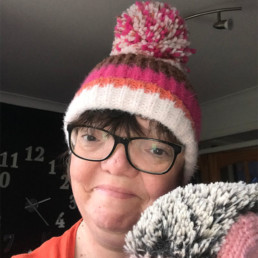
Written by Corinna Richards
An avid crocheter, who also happens to teach, train and lead.
“You never get a second chance to make a first impression.”
— Andrew Grant.
Whether Oscar Wilde or Will Rogers said it first, isn’t for this purpose particularly important. What any student or teacher with a facial disfigurement will tell you, is that it’s true. And the experience of that is hugely important. It’s always been true, but in our “beauty bias” society, looking different – whatever that difference may be, is a big deal. Having a facial or ‘visible difference’ can be excruciating. Our physical appearance matters in first impressions. I’m not saying it should, but from my experience it does.
I blog about this from two perspectives. Firstly, as a person with a congenital facial disfigurement who works in Education and secondly as an EdD student. I’ve just turned 50, and “back in the day” plastic surgery wasn’t as developed as it is now. I had my first plastic, corrective surgery at the age of 11, so I spent my primary school years looking very different. My skull fused together in the womb prematurely which caused my eyes to be extremely wide set and for my nose to be virtually flat with two small nostrils. You can imagine…
However, like everyone, I’ve adapted, over-compensated and fought my way back. I always wanted to teach and that’s what I’ve always done. Apart from three terms in suburbia I’ve always taught in inner city London and only once did I have any issues regarding my face from a pupil. I loved and still do, the diversity of the inner-city, the children were remarkably accepting of my appearance, we were all shapes and sizes together, the issue of ‘normal’ just never seemed too prevalent. The same couldn’t be said for the parents! The suspicion of my appearance was always there, in some heated exchanges a name regarding my appearance would slip out (yawn… I’ve never heard that one before…) and I’ve even had some parents ask my secretary what is wrong with my face! (One of the many reasons I prefer children to adults!)
But last year, I had a bit of a shock.
I am in the third of year of EdD at UEL and I am studying the lived experience of Imposter Phenomenon in Teacher Educators. It’s really interesting, but it wasn’t my first choice. Initially, I wanted to study IP in teachers with visible differences. I couldn’t find any. I didn’t know any. I didn’t know any teachers with facial burns, or severe acne, or disfiguring birthmarks or craniosynostosis… statistically they must exist (I am for one)… but where are they? I then thought about all the pupils I have taught over nearly 30 years… lots of differences, but when did I teach a child who was like me? I don’t think I have. Where are these children and where are the teachers?
Recently, in an updated version of Malory Towers, a young actor, Beth Bradfield, with a visible difference joined the cast, but how often do we see actors with facial burns or scars? Possibly in James Bond, but then of course, only as the villain. I attended my first DEI event last weekend, it was brilliant. Representation matters. Yes, it does. So how do I help other people like me have the courage to stand in front of groups of people and teach. I spent decades of my life trying to hide my face. I was desperate to make my visible difference invisible. It seems like I might not be the only one.
For more information visit:
‘Changing Faces’:
The Katie Piper Foundation: www.katiepiperfoundation.org.uk
Headlines:
Geography: Righting the world?
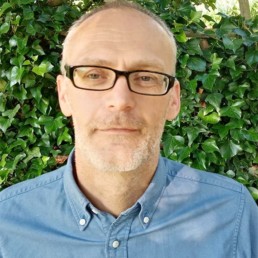
Written by Steve Brace
Head of Education and Outdoor Learning at the Royal Geographical Society. He started his career as a geography teacher and had previously led the education programmes for ActionAid and the Commonwealth Institute.
Studying geography enables young people to better understand the world’s people, places and environments, the interactions between them – from the local to the global scale.
As Ofsted notes, this requires teachers to critically reflect on the imagery, data and attitudes they portray to pupils, so that geography can accurately represents the nature of the world’s people, communities, economies, diversities and experiences (Ofsted 2021). And, as our world continues to change so must geography. This makes the subject such a fascinating and challenging one to teach and why geography has an important role in supporting equality, diversity and inclusion (EDI).
Geography has one of the best gender balances of all subjects and over the last 10 years its GCSE cohort has become much more diverse. Since 2010 its GCSE entries have increased by over 50% reaching a record high of 282,000 candidates last summer. It is welcome that this growth has come predominantly from those groups who were previously less likely to study geography: Black, Asia and minority ethnic pupils; pupils with lower prior attainment; those from low-income backgrounds; and/or pupils studying in comprehensive schools (RGS 2020)
However, the positive change at GCSE is not yet being seen at A Level and the narrowing of intake continues further at university. This is despite the positive outcomes that geography provides for its graduates, who experience above average rates of graduate employment and ‘top 10’ graduate salaries.
It is recognised by the colleagues across the subject community that more work is needed to better support EDI in relation to the curriculum, resources, the teaching workforce and how the subject can support young peoples’ career aspirations. Examples of current activities include:
- Puttick and Murrey’s research (2020) which identified that the ‘piecemeal approach to geographies of race and racism is insufficient for educating students for the 21stC’
- The scholarship shared through the RGS’s Decolonising geographical knowledges conference
- The Higher Education community’s support for accessible and inclusive fieldwork and pride in the field
- The advocacy and work of Black Geographers
- And teacher led initiatives such as Decolonising Geography , Inspirational Geographers and – alongside many others – that of Shiv Das, Hina Robinson and Hafsa Bobat
There are also opportunities to reduce the gap between geographical research and the classroom, such as through the RGS’s Ask the Geographer podcast which share the work of research geographer with teacher and their pupils. Schemes-of-work can also be updated through the incorporation of new research findings, such as the resources based on the Migrants on the Margins research programme which investigated the lives of migrants in Colombo, Dhaka, Harare and Hargeisa. Such resources are further complemented by the wider contributions of many others including Worldmapper, Gapminder and Dollar Street.
Consideration needs also to be given to not only to what is being taught, but also who is teaching geography. This situation is explored in I didn’t have any teachers that looked like me which shares the perspectives of Black, Asian and minority ethnic trainee and early career geography teachers. And they recommend the need for EDI to be held as a responsibility for all geography teachers, as well as the wider subject community and its institutions.
Geographers can also critically reflect on the subject’s development through Britain’s period of Empire and imperialism, how the subject helped create and share stereotypical views about the world and the continuing legacy of these. For example, the very first volume of the Proceedings of the Royal Geographical Society (1857) an author ascribes the Moroccan town of Sala’s decline to “ignorance, despotism and Mohammedanism”. However, dissenting voices – including those of African descent – can be found in geography’s history, such as the 19thC testimony of James Africanus Horton of Sierra Leone and Edward Blyden of Liberia. Both were critics of Eurocentric stereotyping of African cultures and provide an early precursor to Chimamanda Adichie’s warning of a single story. Now in the 21stC there an imperative to rediscover geography’s diverse voices some of which can be seen in the RGS’s Hidden Histories of Exploration which highlighting the important contributions of African, Asian and Inuit people
As the geographer Professor Chris Philo recently said – geography invites both ‘earth-writing’ – words to evoke worlds, and ‘earth-righting’ – actions to improve worlds. For this to be achieved geography needs to become more equal, diverse and inclusive. Many within the subject have been setting a course to help achieve this, though this journey has still significant distance to travel.
Belonging, safely
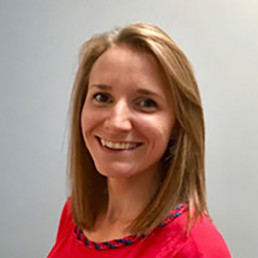
Written by Gemma Hargraves
Gemma Hargraves is a Deputy Headteacher responsible for Safeguarding, Inclusion and Wellbeing.
Reflecting on several sessions from the recent Diverse Educators virtual conference it struck me that so much of our EDI work is also vital safeguarding work. As a Deputy DSL I spend my days balancing pastoral care, safeguarding, History teaching and various other responsibilities. Until now I actually hadn’t realised how my EDI work is complementary to my safeguarding work.
All readers will have heard that “you can’t be what you can’t see” and this need for recognition and role models extends to safeguarding too. Pupils need to know they are in an environment where they are valued and celebrated in order to feel truly safe. It strikes me that a pupil may not disclose various issues if they feel they would not be heard, understood or believed. Beit a neurodiverse pupil struggling with issues around consent, an LBGTQ+ young person experiencing unkindness, a disabled child faced with ableism daily or a person of colour dealing with regular microaggressions. Of course having a diverse staff body, including in senior positions, may help ensure all pupils feel safe and a sense of belonging but active allies have a vital role to play here. Pupils in the first presentation said “ignorance breeds intolerance” and I would build on that to say in safeguarding terms ignorance is dangerous. We all need to be professionally curious whilst being respectful. @AspringHeads gave some examples of shocking things Black teachers have been asked, including endless comments about hair, skin colour or names, and comments of this nature to Black pupils would absolutely be considered a safeguarding concern.
A key part of safeguarding is also accurate and timely recording of incidents; this is key to tracking trends and understanding context to actively promote inclusion. If we are to ensure all pupils are safe and can thrive, we need to have a clear picture of incidents or challenges faced. We have a duty to ensure that pupils are not negatively labelled or stereotyped based on any characteristic and teachers have high expectations of all pupils. Safeguarding is also about preventing harm to children’s development and taking action to enable all children and young people to have the best outcomes – here EDI is clearly vital and we can see tangible returns on investment in diversifying the curriculum. Of course, we reinforce this by the displays around school, the books studied, the trips that are offered etc but the culture individual teachers nurture in their classrooms is key to both EDI and safeguarding.
As was made clear at Diverse Educators recently, good intentions are not enough. We must act. EDI requires resourcing, time and energy. It must not be an afterthought in another year of TAGs marking and administration, staffing issues and COVID challenges ad infinitum. Safeguarding is everyone’s responsibility and so is EDI. We need to recognise and respect cultures, traditions and changes but with clear red lines in terms of safeguarding to ensure everyone can bring their whole self to school and be safe. Sometimes we hear “I don’t see colour” but surely we must see it, value it, celebrate it and protect all children regardless.
Limp Handshakes and Auditory Bias: My Process of Applying for Headship
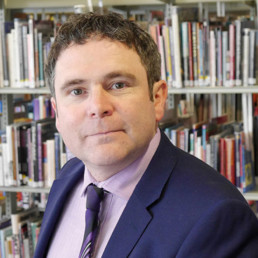
Written by Kevin Carson
Headteacher at The Royal Masonic School for Girls. A learner, an English teacher, and a dad to 2 fab girls. Originated in Liverpool, enjoying living in the Shires.
I have been attending a monthly Diversity, Equity, and Inclusion leadership programme with Diverse Educators since April 2021. It is led by @Ethical_Leader and @Angela_Browne, and it has uplifted, educated, and inspired me every month.
Hannah and Angie are clear and correct that DEI work is safeguarding work, that well embedded DEI makes school communities safer places. The aim of their programme is not to rush into anything in a knee-jerk way, but to listen, reflect, learn, and then start to put together a 3-to-5-year plan that works for each school: carefully planning sustained change over time.
At the start of this week’s session, mention was made of an excellent candidate for headship who so far has not been appointed and there was a feeling that this may at least in part be connected to his race and from that perhaps also in part to his strong accent. This anecdote stayed with me after the session, conscious as I am that over 96% of male and female headteachers in England are white, and with my own awareness of how frequently my accent was referenced when I was applying to be a Headteacher.
I have decided to share a couple of anecdotes relating to my applications for the post of Head at independent schools when my accent was considered a relevant factor.
I once applied for a Headteacher post where afterwards I was told by the head-hunters, “You were the preferred candidate, the first choice, but the Board have decided not to appoint. They were quite vague and evasive with us about why this was, and they could only give reasons such as ‘His handshake wasn’t strong enough’, whatever that means. I think you can draw your own conclusions from this, Kevin.” A few months later, the Bursar at that particular school later told me straight that the Chair of Governors didn’t wish for somebody from my background as Head of ‘his’ school.
On another occasion I attended a training session with one of the head-hunter firms, as part of a course for half a dozen applicants who they felt were close to headship. Afterwards, the course leader told me, “We agreed that you were the strongest candidate from the process we saw today. You are 100% ready to be a headteacher, but we think that you should seriously consider booking yourself in for elocution lessons because your accent will be the reason that you are not going to be appointed.” As an English teacher I know enough about language, culture, and identity to be able to reply that if a school didn’t wish to take me as I am then they weren’t the right school for me and I wouldn’t wish to be their headteacher.
For those who do not know me, as my About Me section says, I grew up in Huyton, Liverpool, a working-class area that is in the second most deprived borough in England, and I have quite a strong Liverpudlian accent. The Chair of Governors at my then current school did make a decision to directly address my accent in his reference, raising it as a potential consideration before clarifying why this shouldn’t be a factor in a Board’s thinking, pre-emptively calling this out as it were.
I am a straight, white, male headteacher of an independent school. I have a 1st class degree, and an M.Phil. from Trinity College, Cambridge – there is a whole bunch of privilege there. At the time of the anecdotes above I was also Interim Head of The Grammar School at Leeds, a large, diamond model school. I had quite a strong CV on paper, and to be honest I suspect that in a comparable way to my accent wrongly being deemed relevant at interview, it is also not inconceivable that my educational background helped get me to the interview stage. Some Boards like this kind of thing, taking it to signify far more than it should.
I want to be clear that this is not a post about bias and class in the independent sector. I have worked in four independent schools, valued them all, and have found them all to be far more egalitarian workplaces than some might imagine. Very many people working in the independent sector desire to do social good and to help to create a more inclusive and sustainable world. More specifically, in RMS, I have found a values-led school with a strong ethos that is prepared to think differently about all aspects of education. I feel appreciated there for who I am, and my accent or social background aren’t referenced in relation to the job that I do because nobody feels they are relevant.
But I have shared a few of my experiences here, (and each of these are only from six years ago), as anecdotal evidence that bias is still out there in appointing Heads. The education system would be a better place if this were not the case, and we all need to consider the ways in which we can demonstrate commitment to a diverse, equitable, and inclusive staff community in our schools. For me, it was bias in relation to attitudes to social class, and a little bit of auditory bias. The government figures from 2019 indicate the extent to which this is a far greater issue in relation to race and ethnicity.
The data shows:
- There were around 22,400 headteachers in 2019, and over two-thirds of those (around 15,100) were women
- 96.1% of female headteachers were White (92.6% White British, 1.7% White Irish and 1.8% White Other)
- 97.0% of male headteachers were White (92.9% White British, 2.1% White Irish and 2.0% White Other)
A few final thoughts on this topic for now from me:
- I hope and want to believe this bias and prejudice is receding, gradually diminishing. I believe in the transformative power of education as a force for social change that makes a positive difference. Interestingly, the Foundation that found my background not the right fit for them and that blamed it on my limp handshake have changed their entire Board since then, and there are now seven women and three people of colour on a more diverse Board there. You would like to think this would not happen again.
- @jillberry102 was a great source of advice and support throughout my applications for headship. She always said that in the end you find the right school for you, the right fit for you. I do think there is something in this. I can now view my earlier experiences as lucky escapes.
- There is a great deal I have taken from the Diversity, Equity, and Inclusion leadership course, both from the leaders and from the brilliant colleagues that are attending with me from both sectors, and from the UK and overseas. I am sure I will write about this learning again, including about how we strive to apply it at RMS. We have just appointed two DEI leads at RMS – they are brilliant colleagues who will do a great deal of good in this role. My first show of support for them was to sign them up for Hannah and Angie’s training course with Diverse Educators.
Supporting pupils with ADHD in schools
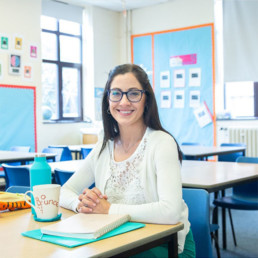
Written by Nadia Hewstone
Nadia is a certified executive school leadership coach. She left headship to start Destino Coaching and now supports school leaders with their own development as well as development of their teams.
Even as a parent of a child with ADHD, as a teacher I struggled to find and implement strategies to support my students with the diagnosis. I found many things that ‘worked’, but many more that didn’t. The search continued when I became a Headteacher who was supporting colleagues who also struggled to find the answer. Where things changed was when I stopped looking for what worked and started understanding what I was happening for those students.
In his book Shattered Minds, Gabor Mate identifies a number of strategies, that spoke to me and that I wished I’d discovered sooner in my career. He makes a case for reducing ‘imposed structure and discipline’ and increasing ‘freedom for individuality and self-expression.’
I was relieved he didn’t go on to advocate unstructured classrooms, as I know that would be nearly impossible, in the current climate. Instead, he talks about recognising the ‘supressed energy’ of students with ADHD through our responses to them, which so often includes sarcasm, shaming and shouting.
This principle is the first to master in our endeavour to support these creative and courageous young people. The secret to success in this matter, for teachers, lies in not adding to the problem by alienating these student any further.
I saw the impact of this in my own school when the teaching staff and I made a pact to refrain from any type of shaming response to a child’s behaviour. We did some work as a team to recognise our triggers and manage our reactions to be able to keep to the pact. Behaviour in this group of students improved dramatically.
This came back to bite me again, when my own child’s behaviour invoked explosive responses in me. I was at my wits end. Then I realised I was angry with my child for having the struggles associated with having ADHD. With lots of support from family, I learnt to change the way I responded to her and I worked on accepting her exactly the way she was. Our lives and our relationship improved remarkably.
Unconditional positive regard doesn’t have to come just from parents, we can adopt it as teachers too. It require honestly, courage and a safe environment, but it is possible. Gabor argues that ‘understanding the student is transformative’ and I have seen this first hand, as a teacher and as a parent. There are other considerations such as working with parents, tailored access arrangements in exams and planning for the need to move and play but the commitment to stop trying to fix children with ADHD is the power pill we all need to take.
So when I work with people who want to provide better support for young people with ADHD, I start with pressing the stop button on wishing they were different and start work on meeting them where they are. All the other work is easy after that.
The British Army’s Diverse Resources for the New Term
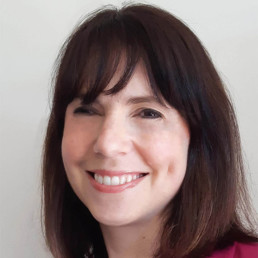
Written by Eleanor Brown
Head of Education Marketing at Capita
The British Army has developed new resources to help students aged 11-16 build their understanding of why it is important to commemorate significant groups in the history of the British Army. Focusing on diversifying the curriculum, This resource pack features Women in the Army, LGBTQ+ Voices and Black History resources with links to PSHE, History and Citizenship.
Each of the resources are available for key awareness days in the school calendar and include ready-to-use lesson plans, assembly presentations, case studies and films to help students understand the changing roles of service people in the British Army throughout history, reflect on who we remember as a society or individuals and explore what it’s like to serve in the Army today. The resources are part of the British Army’s dedication to addressing the inequalities within the organisation and raising awareness of the contributions of service people both historically and now.
Women in the Army Resources
An excellent resource for International Women’s Day on March 8th, the Women in the Army resources have curriculum links to PSHE / Health and Wellbeing, Citizenship and History. The lesson plan offers interactive tasks to help young people to recognise and challenge harmful stereotypes and prejudice both at work and in society as a whole. Showcasing the significant roles women have played from the 1800s to today, the resources explore key terms such as feminism, gender and intersectionality, encouraging students to consider the evolving roles of women in the Army in the context of wider society.
The assembly slides and the film builds on these key themes, showcasing the contributions and accomplishments of women in the Army and reflecting on the stories we remember. The assembly brings a specific focus to the history of women in wartime and features empowering women including Captain Flora Sandes, who was the only woman to fight on the front line of WWI, and Adelaide Hall, a jazz singer who entertained troops in WWII and was the first Black performer to be given a long-term contract with the BBC.
LGBTQ+ Resources
Perfect for LGBT History Month 2020 in February, The LGBTQ+ Voices lesson resources show the progress made within the Army and in wider society with activities that celebrate the contributions of historical and current LGBTQ+ Army personnel, including WWI soldier Edward Brittain and Deborah Penny, the first trans soldier in the British Army. Students can also learn how they can be supportive of all LGBTQ+ people, and other groups and communities, through the allyship video resource.
By profiling six historical LGBTQ+ figures, such as the mathematician Alan Turing and poet Wilfred Owen, the assembly resource asks students to reflect on their contributions. This is followed by a film featuring current LGBTQ+ soldiers, addressing the significance of LGBTQ+ history to them and the progress that has been made by the Army to ensure everyone feels welcome.
Black History Resources
These Black History digital resources for Key Stages 3 and 4 include an assembly and lesson plan to help students understand the stories of Black British, African and Caribbean service people who have often been unfairly excluded from the history books and help students consider some of the reasons for and effects of these omissions.
The assembly resource profiles service people from throughout history, while the interactive lesson resources offer source materials to help students build core historical skills and explore the contributions and stories of Black Britons, West and East Africans and Caribbean service people during World War One. The resources also offer examples of the impact of the war on different Black women, documenting case studies of a Trinidadian, British and an East African (from the Tanzania-Malawi border region) woman.
Questions at the end of each resource help facilitate discussions that address the significance of Black History Month and studying Black History more broadly and how this relates to modern discussions on race and diversity, including reflections from current Black soldiers to help build student’s discussions.
All the British Army resources can be downloaded for free online at: https://apply.army.mod.uk/base/lessons
The Heterosexual Matrix
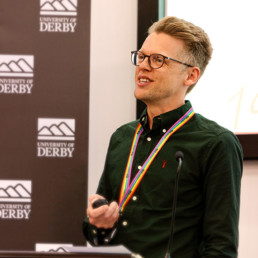
Written by Dr Adam Brett
Adam has completed a doctorate exploring the experiences of LGBT+ secondary teachers. A presentation of his findings can be found here. He also co-hosts a podcast called Pride and Progress, @PrideProgress, which amplifies the voices of LGBT+ educators, activists and allies.
“Children who need to be taught to respect traditional moral values are being taught that they have an inalienable right to be gay”
– Margaret Thatcher, October 1987.
Thanks for that, Margaret. You and your government created a culture of fear, silence and moral panic surrounding LGBT+ lives that continues to this day. Your speech continued, that “all of those children are being cheated of a sound start in life – yes, cheated!”.
She was right about one thing. Section 28 meant children were being cheated of a sound start in life.
Section 28 cemented schools as heteronormative spaces, where being heterosexual and cisgender were silently assumed, leaving LGBT+ people with the impossible decision or whether to be invisible or hyper-visible.
What a choice to have to make.
Do I hide my authentic self to fit in with the legislated normativity of schools, or do I make myself visible and put myself at professional and personal risk?
Patai (1992) refers to this form of hyper-visibility as ‘surplus visibility’, where a person is ‘extrapolated from part to whole’ and seen to represent the entirety of a minority group.
You might be thinking that a lot has changed since the repeal of Section 28 nearly 20 years ago in England. It’s true, a lot has changed and there has been significant cultural and legislative improvements for LGBT+ people. However, schools remain stubbornly heteronormative and cisnormative environments.
Think about the aspects of school that are predicated on a static, binary gender. Toilets; changing rooms; sports; gendered language; uniform; seating plans; residentials. The list goes on. What does this communicate for those who cannot or will not fit into the neat binary of male or female? That they don’t belong.
We could consider similar examples about the ways in which heteronormativity is maintained as the social order in schools. The curriculum; ethos; culture; policies; microaggressions; homophobia; the hidden curriculum; role models.
We can conceptualise all these examples as code.
I love to use the film The Matrix as a metaphor to explain the ways in which socially constructed ideas such as heteronormativity are held in place. When we are plugged into the matrix, we believe it’s real and can’t see the code that is continually constructing it. We can’t imagine alternatives as it’s all there is, in the same way that we can’t think outside of language.
However, when we develop the critical awareness of what is upholding this normativity and develop a language to name it, we become unplugged. LGBT+ people have the critical awareness to identify the ways in which schools seek to include or exclude them. Section 28 plugged us into a matrix of understanding where the silent assumption of cisgendered heterosexuality was so entrenched, that to this day, being an LGBT+ person in school can be a point of constant navigation and information management. Exhausting.
As educators and leaders, we need to listen to the lived experiences of our LGBT+ students and colleagues to create a culture, curriculum and language which can disrupt this code. We need to name things as heteronormative; we need to name things as cisnormative; we need to name things as microaggressions. We need a new language: one that allows us to think outside of the current heterosexual matrix. We need to create schools and spaces where LGBT+ people feel safe and included, without attracting surplus visibility.
Section 28 cheated a whole generation of LGBT+ young people out of a sound start in life. It’s time to unplug the matrix and make sure it doesn’t happen to the next generation.
Adam Brett
@DrAdamBrett

